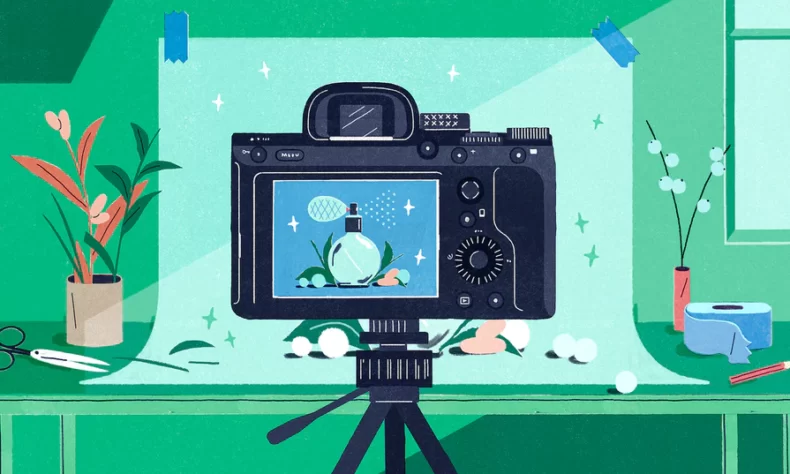
As the world becomes more and more competitive, it is more important than ever to have captivating product photography that will help your new product stand out from the competition. Here are five steps to launching your new product with captivating product photography:
- Choose the right camera. There are many different camera brands and models available on the market, so it is important to choose one that will capture the desired look for your product.
- Choose the right lighting.
How do I take a product photo?
Product photography is an essential part of any product launch. It can help to capture the attention of potential customers and help to sell your new product. There are a few key steps that you need to take in order to create effective product photos Graphic Design Eye.
- Choose a high-quality backdrop: A well-made background can add impact and pizzazz to your photos, while also helping to create a sense of realism. Make sure the backdrop is large enough so that your product fills its up in entirety, and avoid using too much clutter or textured materials – these elements will distract from your product.
- Choose lighting that complements your product: When taking photos of products in natural light, avoid using too much direct light – this will wash out colours and make the items look dark and gloomy. Instead, use indirect light sources such as sunlight or lamps with soft light bulbs.
What is a good angle for product photography?
Product photography is one of the most important aspects of marketing a new product. When potential customers see your new product in person, they can form an emotional attachment to it. The right angle for product photography can make or break the sale. Here are four tips to launching your new product with captivating product photography:
- Choose the right angle: The first step in creating successful product photography is choosing the right angle. You want to capture your new product in a way that shows off its features and makes it look appealing. A good angle for product photography is from below, looking up at it, or from above, showing off its design.
- Use light and shadows: Another important factor when shooting product photography is using light and shadows correctly. By using light and shadow, you can create a more realistic image that will draw customers in.
How to take beautiful product photography that captivates customers?
If you’re thinking about launching a new product, it’s important to take beautiful product photography that captures the interest of your customers. Here are 8 tips for achieving stunning results:
- Choose the right tools and settings. Use the right camera settings for your product and lighting conditions. Make sure everything is in focus and properly exposed.
- Capture from multiple angles. Take photos from all angles to show off the full features and functionality of your product. Be sure to include close-ups of key features as well.
- Create interesting backdrops and props. Add interesting backdrops or props to add more visual interest to your shots. This can help draw attention to specific areas of your product or create a more cohesive look overall.
- Structure your shots intelligently.
How can I launch my new product?
Launching a new product can be an exciting process, but it’s not easy. You need to come up with a great idea for a product, design a sleek and attractive logo, create a user-friendly website, and come up with creative marketing strategies. Here are some tips to help make your launch successful:
- Come up with a great idea for your product. It’s important to have a strong concept behind your product if you want people to buy it. If you can’t explain what your product does in just two sentences, it may be difficult to generate interest in it.
- Choose the right branding strategy for your new product. Your logo is one of the first things potential customers will see, so make sure it looks good and represents your brand well.
How can I improve my product photography?
Product photography is an essential part of marketing a new product. It can help to create a good first impression and convince buyers to consider buying your product. There are several steps that you can take to improve your product photography.
- Consider the composition of your images. It is important to think about how your images will be used and what message they will send. Will they feature the product alone or in context with other products? Will they show off the features of the product, or just its exterior? The composition of your images will determine how successful they will be in conveying your message.
- Choose the right lighting for your photos. Product photography often involves using light to showcase features or highlight specific aspects of the product. You need to choose the right type of light for your photos if you want them to look their best.
What should I do if my product is not well-lit?
When it comes to product photography, lighting is key. If your product isn’t well-lit, it can make for a lackluster photo that will turn potential buyers off. Here are some tips to help you launch your new product with captivating photography:
- Choose the right light source. The main light in your shot should be a bright light source that casts an even light across your product. This means using a studio light or a overhead light.
- Location, location, location! Make sure your shot is taken in a natural setting with plenty of ambient light so it doesn’t look too staged.
- Get creative with angles and perspectives. Try shooting from high or low angles to add interest and depth to the photo.
- Keep things simple! Don’t overcomplicate your photo with unnecessary elements or props.
How can I get my product to stand out from the competition?
When launching a new product, it’s important to make sure that the photos accompanying it are captivating. Here are some tips on how to get your product to stand out from the competition:
- Use interesting backgrounds and props. This will help draw attention to your product and make it more appealing to viewers.
- Take pictures in natural settings. This will help show off your product’s natural features and give it a more realistic look.
- Incorporate 360-degree photos into your repertoire. These shots let viewers see all sides of the product, increasing its appeal exponentially.
- Shoot in bright, saturated colors. This will help highlight the product’s features and make it more visible onscreen.
- Use close-ups of key details to really showcase what makes your product unique.
What is the best way to use product photography?
Product photography is an essential part of any product launch. It can help to sell your product, make it more appealing to consumers, and show off the features and benefits of your new product. Here are some tips for creating captivating product photography:
1.Choose the right background: A well- chosen backdrop can add depth and character to your photos. Try choosing a contrasting color or using natural elements like flowers or trees. If you don’t have access to a suitable backdrop, you can use a plain white sheet or canvas to create a similar effect.
2.Choose the right lighting: Incandescent light bulbs give off warm light that’s ideal for portraits and close-ups, while tungsten lights create cooler tones that work better for products with darker colors or detailed textures.
What software is the best for product photo editing?
Product photography is one of the most important aspects of marketing your new product. Creating stunning images that entice potential buyers to invest in your product can be a challenge, but with the right tools and techniques, it’s definitely possible. Here are four tips for creating gorgeous product photos:
- Use high-quality software. The best software for product photo editing is typically expensive, but it’s worth it to get crisp, clean images that look professional. Adobe Photoshop and Photoshop Elements are two of the most popular options, but there are dozens of other programs available as well.
- Shoot in natural light whenever possible. Product photos look their best when they’re shot in natural light with accurate white balances and good exposure adjustments.






